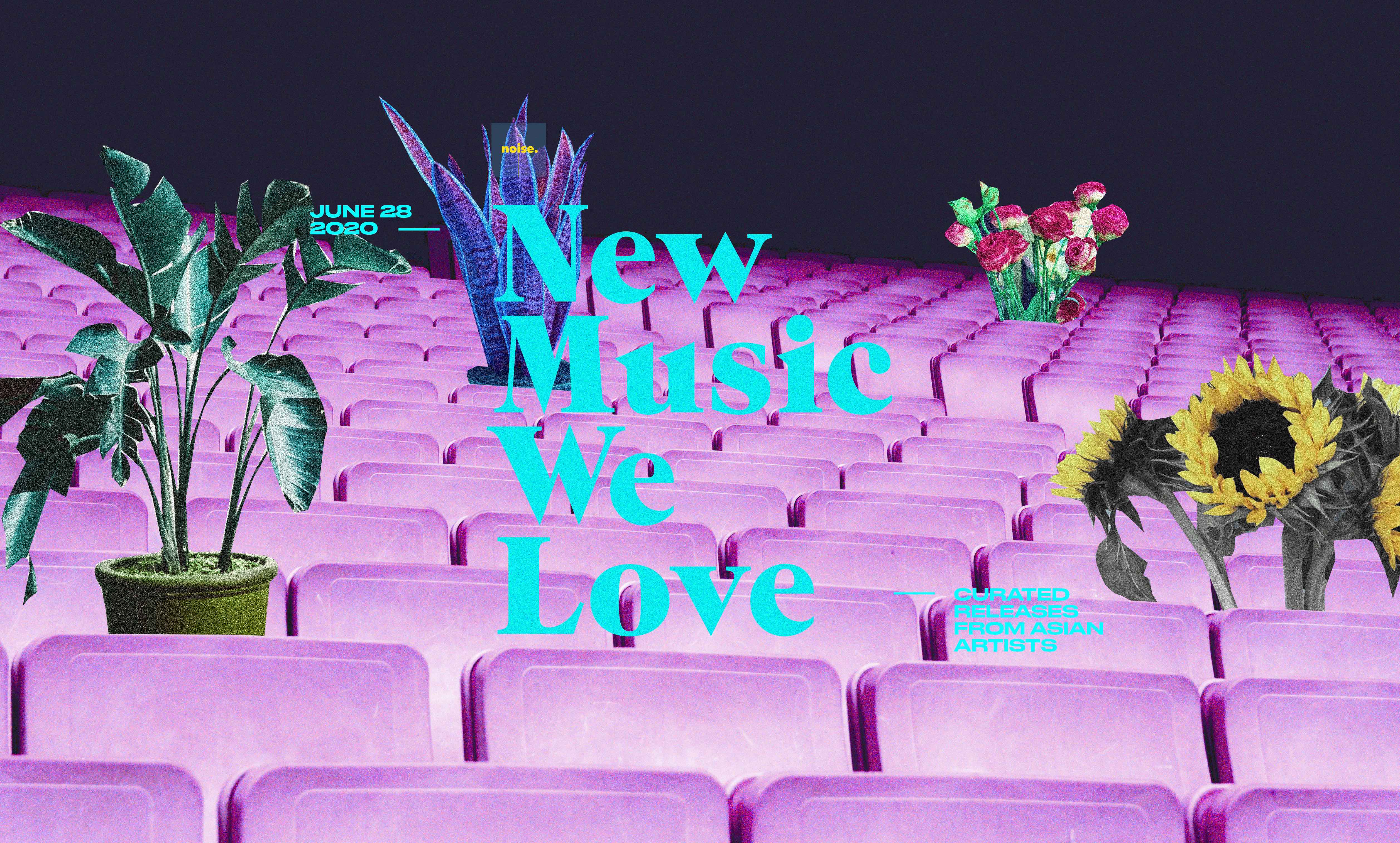The artist behind the album art for Jason Dhakal and Snow Rose on melding visual arts and music
By MC Galang
Header Art by MC Galang; Portraits courtesy of Jethro Ian
I first met Jethro Ian Lacson in 2018—at the tediously dull Terminal 2 of Ninoy Aquino International Airport, of all places—on our way to Jakarta, Indonesia to attend the three-day We The Fest music festival. He wore his hair longer then, pink and blond, and gave me a conspicuous impression that he might be an artist as well.
That was immediately confirmed as he began posting his acrylic portraits of Lorde (who was among the headliners of that year’s festival) and prominently featured the Melodrama artist as the cover of his first independently published zine, Romantic.
In February 2019, the Manila-based artist and illustrator held his first solo exhibition Never Are We Awake at House of Frida in Negros Occidental. The collection was “a documentation of the dreamlike state of his early adulthood done in layers of paint and graphite… we are led to find the humor in mortality and anxiety in survival.”
Fast-forward a year later, his self-described fan art of musicians turned into cover art commissions for singer-songwriter Jason Dhakal’s lovesound album and musician Snow Rose’s Lethargy EP.
In April, he illustrated the cover for fashion magazine Preview and most recently partnered with Netflix, along with fellow queer artist Sai, for a series of portraits featuring their favorite LGBTQ+ characters from Netflix original shows like Sex Education, Elite, and Special.
Before Pride month wraps up, I reached out to Jethro about his work and his thoughts on music’s relationship with his art.
This interview has been lightly edited for clarity.
How would you describe your work?
I mainly do portraiture heavily inspired by pop culture, music, and literature. I started practicing with traditional media like graphite. watercolor, and then acrylics. Recently, I have been also exploring digital painting.
Can you share with us your process when it comes to selecting subjects?
I get inspiration from cinema, music, and writing. I build an image by putting together elements that stand out to me. It’s more like image-building first, then executing it. I love playing around characters and doing portraiture gives you both an intimate access to whoever you are painting, but provides a great deal of freedom to explore.
What are your most important considerations when it comes to interpreting or reimagining the essence of your subjects or the theme you’re working with?
As much as honoring the subjects, I also try to put as much of my personality to the piece. I think it boils down to the connection to the artwork. If I end up doing a commissioned portrait, I still put in elements that I resonate with, so I still see myself in the piece.
You made the cover art for Jason Dhakal’s latest work, but even before that, you’ve been creating portraits of musicians (including Lorde’s!)—how do you visually approach music?
Music has long informed how I approach art: it is layer-building. I also enjoy picking apart lyrics, and then giving my own meaning to them. Most of my early works until now have been fan art. I find it really interesting interpreting musicians and their music through visual art.
I really loved working with Jason. He really is a completely realized artist, and had an idea already of what he wanted the art to feel like. It was just up to me to interpret it. He was very sweet and was absolutely a joy to work with. And mad talented too.
The local music scene has its history of hostility and intolerance against LGBTQ+ folks (e.g. songs like Kamizakee’s “Chiksilog” and Young Vito’s “Awit”). More often than not, many of these songs are relegated to cult status. What are your thoughts on this and as an artist yourself, do you believe that we should be re-evaluating the messages these songs carry or would you say that doing so is a slippery slope situation?
Growing up, I have heard songs that share the same messages these songs have. And it is very damaging. I remember hearing those songs and immediately freezing up and getting tense. Because music is so powerful, and when you hear words that are mocking, and hurtful—sung and produced and blasted from the radio, it makes you feel powerless, humiliated. Music shouldn’t have that effect on you. If anything, it should uplift or inspire you.
Dissecting and re-evaluating messages of songs are necessary, especially if it will degrade or hurt people. I understand that songwriting is an incredibly personal expression, but when songs like these are what you hear being blasted everywhere, it creates a seclusion and eventually a hostile environment to fellow LGBTQIA+ folks. And this will just pile on, on top of the already tricky situations we find ourselves in.
Read: Exploring LGBTQ+ Narrative In Filipino Music: Where Are We So Far?
On the other hand, what is music’s role in your life and creative identity?
Saying it’s important is an incredible understatement. We find solace in music, we soundtrack our lives to our favorite records. I have found myself learning the words to the feelings I never knew could be described. We feel less alone. We feel celebrated.
Dissecting and re-evaluating messages of songs are necessary, especially if it will degrade or hurt people. I understand that songwriting is an incredibly personal expression, but when songs like these are what you hear being blasted everywhere, it creates a seclusion and eventually a hostile environment to fellow LGBTQIA+ folks.
Check out Jethro Ian’s other artist portraits, courtesy of the artist.
See more of Jethro Ian’s art on Instagram
